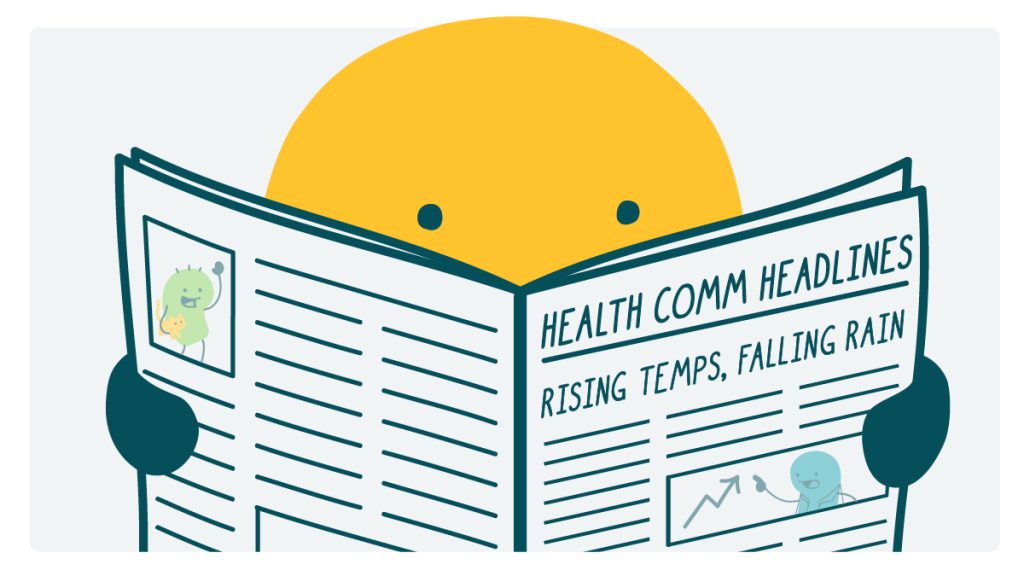
It’s no secret that we’re feeling the effects of climate change across the nation right now, with new stories about extreme heat, flooding, and wildfires in the news each week. It’s also no secret that the health effects of climate change aren’t being felt equally — with social determinants of health and other factors driving significant health disparities. While these can feel like daunting topics to tackle, let’s start by doing what we do best as health communicators — staying informed about how climate change is impacting our communities’ health, communicating clearly with our audiences about how climate change can affect them, and sharing actionable information and resources. To that effect, we’ve rounded up a few recent headlines.
- We Mapped Heat in 3 U.S. Cities. Some Sidewalks Were Over 130 Degrees. (New York Times)
While extreme heat is a problem many people in the U.S. have faced this year, we like that this piece showcases how certain groups — like Native Americans and people who don’t have housing — are disproportionately affected by extreme heat. It also sheds light on some of the obstacles cities face to finding more effective responses to heat. In many places, complex solutions — like changes to building codes and construction practices — are needed to mitigate the effects of extreme heat. - Wildfire Smoke Contributes to Thousands of Deaths Each Year in the U.S. (NPR)
As public health data nerds, we loved reading about the data-driven research highlighted in this piece. It covers 2 analyses from the National Bureau of Economic Research and Yale University that link tens of thousands of deaths in the U.S. each year to contact with wildfire smoke — which worsens certain health problems and causes more and more damage over time the more people are exposed. These analyses show that wildfires pose broad public health risks that go far beyond the immediate threats to people and property where fires burn. - Vector-borne Illnesses Are Taking a Bite Out of Our Health and Safety (AgInnovation)
Diseases spread by vectors — like ticks, birds, mosquitos, and other living organisms — are increasing across the Northeastern U.S., due to warmer temperatures caused by climate change. This piece highlights the health threats of vector-borne illnesses and how universities in the Northeast are working to address them. The article also draws attention to how drastically our environment is changing, even within a generation or 2. Which seems even more relevant, given another piece of recent news about a mosquito-related outbreak of the rare, but very dangerous eastern equine encephalitis virus in Massachusetts. - The Visible and Unseen Dangers Lurking in Floodwater (Johns Hopkins Bloomberg School of Public Health)
Did you know that flooding is the most common natural disaster in the U.S., dear reader? And the health risks go far beyond drowning. Dangerous objects (like glass or lumber), hazardous chemicals, and pathogens can all get swept up in floodwater and cause injuries or disease outbreaks. We like that this piece closes with some practical tips for what to do if you come into contact with floodwater — modeling effective communication about emergencies.
The bottom line: As health communicators, we can serve our audiences by staying informed, bringing attention to the health risks of climate change, and calling for systemic change whenever we can.
Copy/paste to share on social (and tag us!): In this edition of #HealthComm Headlines, CommunicateHealth explores top stories about #ClimateChange and its related health risks. Check it out: https://communicatehealth.com/wehearthealthliteracy/health-comm-headlines-climate-change/ #HealthComm #HealthLiteracy #ClimateChange
Browse recent posts